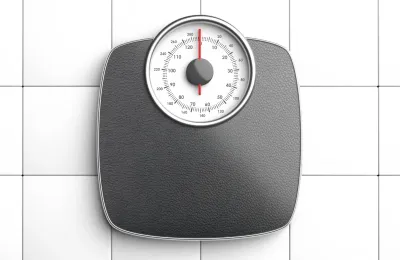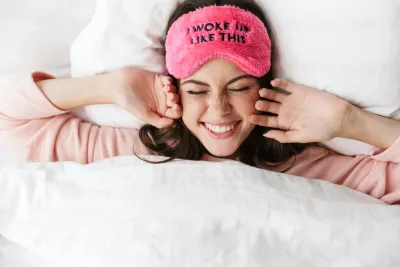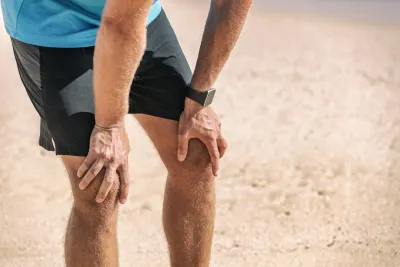Athlete Development: Boost Recovery & Performance with Sleep
Chilipad Editorial Team • Aug 12, 2025

The Rest Factor: Episode 10 with Dr. Allison Brager
You can also listen to the full podcast episode with Dr. Allison Brager.
Key Takeaways
- Chronotype Impact: Whether you’re an early bird or night owl, your chronotype influences how sleep loss affects performance.
- Mismatch Matters: Training or competing outside your natural rhythm can amplify the effects of sleep deprivation.
- Cognitive Costs: Sleep debt combined with chronotype misalignment can reduce focus, decision-making, and reaction time.
- Physical Decline: Strength, endurance, and recovery all take a hit when sleep patterns clash with biology.
- Performance Edge: Aligning schedules with natural chronotypes and prioritizing consistent sleep supports peak output.
Sleep deprivation and chronotype are two critical yet often overlooked factors that can significantly affect athletic performance. Whether you're a professional athlete, a fitness enthusiast, or a coach striving for optimal results, understanding these biological forces can give you a competitive edge.
By aligning training schedules with an athlete’s internal body clock or chronotype and learning how to mitigate the effects of sleep deprivation, you can unlock new levels of performance and recovery.
In this week’s episode of The Rest Factor Podcast, we sit down with Dr. Allison Brager, U.S. Army neurobiologist and sleep researcher, and discuss how chronotypes influence physical ability, how sleep deprivation impacts training, and practical strategies like sleep banking and scheduling exercises at peak circadian times to enhance performance naturally.
What Is a Chronotype and Why Does It Matter?
Chronotype refers to a person’s natural sleep-wake preferences, governed by their internal biological clock. Your chronotype determines whether you’re a morning lark, night owl, or somewhere in between.
These sleep preferences are not just habits, they have a genetic basis primarily regulated by the body’s master clock located in the brain’s suprachiasmatic nucleus. As Dr. Allison Brager, U.S. Army neurobiologist and sleep researcher, mentioned in the
The Rest Factor Podcast, "Chronotype is essentially a very scientific clinical term for your preference to be a morning person, an evening person, or neither."
Common Chronotypes Explained
- Morning Lark: High energy in the early morning, typically asleep by 9–10 PM.
- Night Owl: Peak alertness occurs late; prefers to stay up past midnight and wake later.
- Intermediate Type: Operates best in late morning to early afternoon, most common among adults.
Why this matters: Your chronotype influences hormone secretion, body temperature rhythms, and physical performance timing, making it a powerful tool for optimizing training plans.
How Does Chronotype Affect Athletic Performance?
Chronotype directly impacts athletic thresholds, perceived exertion, and recovery by dictating when your body performs optimally throughout the day.
Diurnal Variation of Performance
Research confirms diurnal variation, meaning exercise capacity fluctuates depending on the time of day. Morning-types generally perform better in the early hours, reporting lower fatigue and more efficient heart rate recovery during AM workouts.
Time-of-Day Training Aligned With Chronotype
A systematic review showed that aligning training times with an athlete's chronotype boosts aerobic capacity and muscle torque. Evening-types who train in the morning may experience reduced coordination, increased fatigue, and higher injury risk.
Team and Competitive Advantages
Teams with diverse chronotypes can deploy players at different times of day for optimal team performance, especially important in sports like soccer, rugby, or esports that may involve varied match times.
As Dr. Allison Brager explained during the podcast, "The teams that had more variability in chronotype, it translated to more wins and fewer injuries in that team because they were able to cover like the full circadian gamut."
Sleep Smarter with the Chilipad
Training hard but sleeping hot? The Chilipad gives you science-backed, water-powered temperature control to optimize recovery and align with your natural chronotype.
Can You Train for Sleep Deprivation?
One of the more damaging myths in sports is that athletes can “adapt” to chronic sleep loss.
The reality is: No, You Can’t Train Yourself to Tolerate Sleep Deprivation
Sleep deprivation impairs decision-making, reaction time, and muscle recovery. It's been shown to elevate rates of perceived exertion (RPE) and cause hormonal imbalances that hinder both short- and long-term performance.
But You Can Bank Sleep as a Preemptive Strategy
Sleep banking, accumulating extra sleep before a known period of deprivation, can reduce the severity of performance decline. Elite military units and Olympic athletes increasingly use this strategy to stay sharp during phases of unavoidable sleep debt
Sleep Optimization Strategies for Peak Performance
Optimizing sleep isn't just about sleeping longer, it's about sleeping smarter. Here are evidence-based strategies for improving sleep quality and aligning with your chronotype.
Tailor Your Sleep Schedule to Your Chronotype
- Morning types should go to bed early and schedule training by 8 AM to match peak biological alertness.
- Evening types should train later in the day (4–8 PM) and avoid early morning workouts if possible.
Control Environmental Cues (Light & Temperature)
- Reduce blue light exposure 90 minutes before bed via screen filters or glasses.
- Maintain a cool, dark bedroom (60–67°F) to support melatonin production.
- Block external noise and light with blackout curtains and white noise machines as
- needed.
Establish Pre-Sleep Rituals to Signal Wind-Down
- Take a warm shower to promote heat loss and sleep onset.
- Avoid stimulants (like caffeine) at least 6 hours before bedtime

Caffeine: A Friend or Foe During Sleep Deprivation?
Caffeine can boost alertness but it’s not a replacement for sleep.
Strategic Use of Caffeine
Use caffeine (100–200 mg) 30 minutes before workouts or mental tasks only when necessary. Avoid it late in the day to prevent disrupting nighttime sleep.
Pitfalls of Over-Reliance
- Masks sleep deprivation symptoms temporarily
- Can interfere with deep sleep and increase cortisol levels
- Leads to dependency and reduces sensitivity
Only real sleep replaces lost sleep. Caffeine should complement, not replace, solid rest.
What Time of Day is Best for Training Based on Your Chronotype?
Morning People (Larks)
- Best time to train: 6–10 AM
- Ideal for endurance sports (e.g., distance running, swimming)
- Peak coordination and cardio function align with early hours
Evening People (Owls)
- Best time to train: 4–8 PM
- Superior strength and power metrics later in the day
- Better performance in short-duration, high-intensity sports (e.g., sprints, weightlifting)
Intermediate Chronotypes
- Best time to train: 10 AM–2 PM
- Adapt more easily to fluctuating demands and competition schedules
Can You Shift Your Chronotype?
While largely genetic, research suggests that training times can influence chronotype shifts.
Training Influence Over Time
For example, during Ramadan, athletes who trained in the evening began to show changes in performance rhythm and bedtime, indicating that habitual behavior can nudge chronotype boundaries slightly.
Light and Behavioral Modifications
Bright light therapy in the morning or delaying light exposure in the evening are among the few tools shown to shift circadian rhythms to a minimal degree.
Personalized Sleep and Training Playbook
Here's a step-by-step breakdown to put these insights into action:
Step 1 – Find Your Chronotype
Use the Morningness–Eveningness Questionnaire (MEQ) or a chronotype quiz. Classify yourself as an M-type, E-type, or N-type.
Step 2 – Adjust Routine Accordingly
Identify your biological peak times and align training, cognitive work, or exams within that window.
Step 3 – Sleep Bank Prematurely
If you anticipate heavy training, travel, or competition, aim for 9–10 hours of sleep in the days prior.
Step 4 – Optimize Sleep Environment Nightly
Optimize your sleep environment by incorporating low light, cool temperatures, and consistent bedtimes to reinforce healthy rhythms.
Step 5 – Prioritize Recovery
Remember that recovery, especially during sleep is where real gains occur. Add naps (20–90 minutes) if you miss nighttime sleep. The science is clear: synchronizing your training and sleep strategies with your chronotype can dramatically enhance athletic performance.
From regulating perceived exertion levels to maximizing aerobic and muscular output, your biological clock is a silent force shaping your performance every day.
While you can’t "train" out of sleep deprivation, you can mitigate its effects with techniques like sleep banking and environmental optimization. Understanding that sleep is not a luxury but a performance pillar might be the most valuable mindset shift for athletes today.
So take the time to assess your sleep patterns, learn your chronotype, and construct a lifestyle that works with your body, not against it. Because in high stakes competition, alignment with your biology isn’t optional, it’s essential.
The Rest Factor: Listen to Previous Episodes
You can also catch the full episode—and browse past Rest Factor podcasts—on your favorite podcast platform with just a click.









